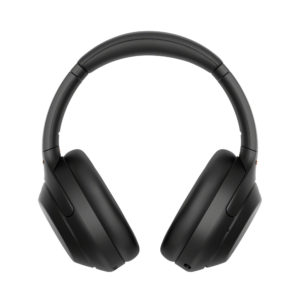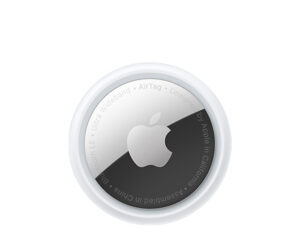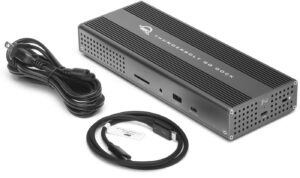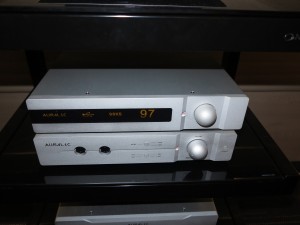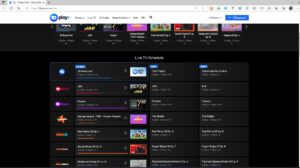
The Ten Network offers some FAST-TV channels through its TenPlay platform
FAST streaming TV is a new way of offering TV services via the Internet. FAST stands for Free Ad-supported Streaming TV; implying that the service is dependent on advertising for its income like a commercial free-to-air TV station. Personally, I would prefer to refer to these services as FST services to encompass public-service broadcasters or community broadcasters who run a business model that eschews advertising or subscriptions, such as the BBC in the UK or ABC in Australia.
But this is about offering a linear TV service via the Internet without having it appear on an RF-based carrier like terrestrial (aerial), cable or satellite. This is in contrast to free-to-air and subscription TV operators who run their linear TV services using Internet means in addition to RF (terrestrial, cable or satellite) means. There is also the ability to offer interactive and personalised advertising which may appeal to advertisers and viewers.
The two main approaches
FAST services are being offered under two different approaches. One is via a broadcaster or other content provider who already has significant presence within its market including offering their own content on their own service. This approach is being taken by most of the commercial free-to-air TV stations in Australia and could work for established broadcasters or the “basic cable” content providers moving themselves off cable to over-the-top Internet delivery. This is in addition to offering the channels distributed normally through RF means being offered using Internet means and, in some cases, providing editorial content for areas different to what is received locally via terrestrial or cable using an Internet stream.
Some TV providers like Australia’s public-service and commercial free-to-air TV networks use FAST-equivalent Internet-delivered TV streams as a way to allow viewers to “jump” editorial borders and, perhaps, watch an interstate news bulletin. We experienced this by accident once when we couldn’t find the TV’s remote control and used our Apple TV and its remote control to control our TV via HDMI-CEC.
Here, we used the ABC iView app to watch the ABC TV stream but accepted the default setup which provided us with the Sydney feed rather than the Melbourne feed which was relevant to us. The news bulletin was full of Sydney-based news including NRL rugby-league and the NSW weather report rather than the Melbourne-based news with AFL Australian-rules football and Victorian weather report. This kind of viewing could be seen as of relevance to, for example, people travelling to another district and wanting to know what the weather will be like at their destination.
The other approach is a company that hasn’t created its own content but simply redistributes channels, runs the user experience and sells advertising time. Such a company can be a TV or set-top device manufacturer like Samsung, a connected-TV platform developer like Roku or someone who just offers an app to many connected TV platforms. Here, content producers would offer TV channels via Internet or satellite means to one or more of these FAST TV services.
What is this leading to
Supplementary, niche and heritage content
Some of the traditional free-to-air broadcasters are using the FAST (FST) approach to offer extra content in an Internet-first means. This is seen as a low-risk means to offer supplementary content rather than having to engage in a high-risk approach of obtaining extra RF capacity or licences for a new service.
For example, TenPlay in Australia has been exploring this approach to offer supplementary content for sports events they have rights to and even brought the Pluto TV PAST service in to Australia. Or the Seven Network used 7Plus were providing “direct-to-sport” access for the Olympic Games where you could see the fixtures relating to a particular Olympics sport of your choice.
At the moment, traditional free-to-air TV broadcasters and channels who appeared in basic cable-TV tiers are showing interest in FAST services. For basic-cable-TV services like news services, it is seen as a way to become less dependent on cable and satellite TV networks leading to a way to reduce costs and assure some editorial independence. The traditional free-to-air broadcasters see this as a way to take their content further including to “take advantage of the moment”.
Here, a key advantage is to provide niche content whee it is not justifiable enough to acquire RF space like a satellite transponder or DVB-T multiplex bandwidth to serve that niche. It can also be seen as a way to try out particular geographic or, more so, demographic markets with content that appeals to them, also courting advertisers who offer products and services appealing to that demographic.
For example, the Seven Network have set up a FAST Bollywood channel through 7Plus to offer content that appeals to the Indian-subcontinent diaspora in Australia. Or the Ten Network have annexed the Pluto TV FAST service to Australia and offered it vla TenPlay with ad space for local businesses.
In addition, a broadcaster who has a lot of heritage built up in their intellectual property could run FAST channels based around that content. This is an approach that a lot of the free-to-air broadcasters and film studios are taking with FAST TV by offering channels celebrating this heritage.
FAST as another form of “cable TV”
In some countries like North America where the classic cable-TV business model has been valued, third-party companies like TV manufacturers or connected-TV-platform developers have simply ended up being FAST service providers. They simply ended up managing the end-user experience, partnering with channels and selling advertising time.
Here, this leads to the many-channels cable-TV experience in a new over-the-top Internet-driven package. It could especially allow the channels that were typically offered in a basic cable package to continue to exist as well as providing a platform for niche channels to exist.
There will be the “Netflix/YouTube” type of TV viewers who will have done away with linear TV in all its forms. This cohort would place emphasis on carefully choosing which shows to watch so as to avoid being seen as the couch-potatoes of yesteryear. This also includes binge-viewing of TV series that they show interest in by seeing a run of episodes in a single session.
Complementing video-on-demand and broadcast TV
FST TV complements AVOD (Advertising-supported Video On Demand) or BVOD (Broadcaster-provided Video On Demand) by allowing the same provider to offer streamed linear and on-demand content. That means that viewers who prefer the traditional discoverability of content offered by a linear service and those who prefer to view what they are interested in using an on-demand service.
A service provider can easily consider offering shows on FST and VOD under the same user interface. This could work in a similar way to the BVOD services offered by traditional broadcasters, where a viewer can see earlier episodes of a show they watched on a linear service. For example, it could be about catching up on a season of a show or watching a few prior episodes to justify whether to continue watching it.
Both these services will have various attributes in common such as to support interactive TV for editorial or advertising material from the get-go. This can appeal to both editorial content such as alternative angles or commentaries for sporting events; or advertising where you can follow through on advertised products or services that interest you.
Once DVB-I and similar integration technologies come in to play, it could be about the ability to channel-surf between FST channels and traditional TV channels. This could make FST platforms more appealing to those of us who like to continue watching TV on the big screen.
Key questions
Brand safety and social licence to operate
Most FST channels would implement production values similar to established public-service and private TV networks. As well, there would be an expectation by the FAST TV services to place ads beside appropriate content to assure brand safety and suitability.
But the Free Streaming TV ecosystem could become a breeding ground for services and channels that don’t have social licences to operate. This could be about news channels that engage in fake news and disinformation or channels running content that is socially questionable. Or there can be issues like when certain editorial and advertising content should be on air so as to make sure children aren’t seeing inappropriate material.
This could be facilitated by a FAST service that is laissez-faire about whom they partner with or what they offer. Or, like I have seen with various “free speech” social networks, it could be easy to set up a FAST service that offers controversial content because there isn’t the need to acquire a broadcast licence or agree to use cable or satellite capacity.
But this issue could be answered with FAST services or trade association who resolve to vet channels that they want to partner with. Similarly app-driven platforms could exert a “gateway role” regarding apps for connected TV services. This is something that Apple, Google, Samsung, and the video-game console platforms have done successfully.
Or countries could apply the “rules of broadcast” to the FST TV ecosystem and have it subject to scrutiny by their broadcast and communications authority like Ofcom or ACMA. It is something that may be easier if the content services or distributors are founded in or have an office in their jurisdiction.
Simplifying the user experience

FST TV will need to permit simplified lean-back operation with the TV remote control if it is to be successful
FST TV will also need to permit a user experience similar to what has become customary for traditional RF-based broadcast TV. This is to provide for the ability to:
- channel-surf suing the typical up-down button on the remote control,
- view an electronic programme guide that shows what’s on across all channels and services;
- enter a channel number to gain direct access to a particular channel and
- use a “previous channel” button to switch between two different channels.
Here, this avoids a long-winded channel selection process where the viewer would be expected to go up to the FST service’s menu to select another channel or to the main “connected-TV” menu to switch between FST services.
This could be facilitated via DVB-I or similar technologies associated with TV content distribution. The TV sets and set-top boxes would then be required to create amalgamated channel lists and EPGs that are, perhaps, sorted by “channel numbers”, priority lists or service providers.
Conclusion
FAST TV / FST TV could act as an over-the-top Internet-delivered equivalent to terrestrial, cable or satellite TV in providing that linear discoverable viewing experience that we have loved for a long time.



